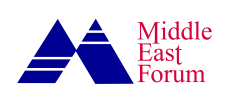Ahmad Hashemi, freelance analyst and graduate student at the Institute of World Politics, participated in the reform movement in Iran. He spoke to an August 4 Middle East Forum Podcast (video), and the following summarizes his comments:
The Greater Iran concept, or “Iranshahr,” refers to “the imperial nature of Iran.” The expansionist ideology “informs and influences Iran’s behavior and its domestic and foreign policies.” Historically, Iran has included a significant number of minorities. Unlike the collapsed empires that were replaced by nation-states in the twentieth century, Iran survived as a “multi-ethnic empire” due to the Pahlavi regime’s “heavy-handed military presence” in non-Persian ethnic areas that desire autonomy. Today’s Iran is a Persian empire “with a Shiite flavor.” Under the current-day fundamentalist Shiite mullahs, the Islamic Revolutionary Guard Corps and other “designated terror organizations” continue to “use violence as a means to keep the country integrated superficially.”
The one point of agreement between the Islamists and secular Persians is the Iranshahr ideology, which seeks to expand imperial Iran and revive the Persian Empire.
In the 1940s, attempts at establishing autonomous and independent areas of Iranian territory, such as South Azerbaijan and the Kurdish Republic, failed because of the bipolarity arrangements between the Soviet and American powers during the Cold War. The 1979 Islamic Revolution in Iran did not change the aspirations of the “pro-autonomy, pro-independence” secessionist movements in a divided country seeking equality with Persians. These movements were met with harsh regime suppression that persists today.
As a Shiite majority nation, Iran aimed to unite the non-Persian ethnic groups under the monolithic faith, but with the decline of religiosity, ethno-nationalism is on the rise among both Persians and non-Persians, creating a “serious friction point for a nation.” However, the one point of agreement between the Islamists and secular Persians is the Iranshahr ideology, which seeks to expand imperial Iran and revive the Persian Empire. Within that model, the secular nationalists differ from the Islamists in that the former want Iran to transition “from Islamist tyranny to monarchist tyranny with the Persian identity as the core idea.”
Iran is an “apartheid regime on three fronts.” First, it engages in “gender apartheid” where women are treated as inferior to men. Second, it practices “religious apartheid” where non-Shiites and non-Muslims are treated as second-class citizens. And third, it makes use of “ethnic apartheid,” wherein non-Persian minorities are marginalized “economically, politically, [and] culturally.” The opposition forces of Pahlavi monarchists refuse to acknowledge ongoing discrimination against non-Persian ethnic minorities and support the regime’s suppression of them because the monarchists consider them “a threat to Iran’s national unity and territorial integrity.”
The monarchists pay lip service in English to the idea of promoting “one nation, one flag, one country, one language,” but in Farsi they give tacit approval to the regime’s suppression of ethnic minorities. The monarchists are “opposed to any sort of expression of identity, anything other than Shiite, Persian, and a predominant identity [as] Iranian, Persian, Shiite.” This is “one reason that can explain why the opposition forces have not been able to unite against” the Islamic regime. Now that the 12-day Israel war against Iran is over, the regime has returned to “their DNA—Islamism, hostility towards secularism and towards the West, and towards Israel.”
Israel should extend outreach to the ethnic minorities because the Iranshahr doctrine “encourages coercive ‘Persianization’ of non-Persians in Iran and also territorial expansion via proxy forces abroad.”
As to Israel’s role “as it pertains to Iran today and its imperial ambitions,” the Jewish state’s public diplomacy is focused too heavily on Persian nationalists and Pahlavi monarchists. Rather, it should extend outreach to the ethnic minorities because the Iranshahr doctrine “encourages coercive ‘Persianization’ of non-Persians in Iran and also territorial expansion via proxy forces abroad.” As ethnic minorities are pro-Western, pro-Israel, and pro-Jewish, they are the “solution for future Iran.”
Three steps to end imperial Iran include: (1) empowerment of the ethnic minorities to fight the war with the Iranian regime through “local boots on the ground”; (2) the territorial collapse that would result from ethnic minorities’ taking the fight to the regime; (3) implementation of a no-fly zone in minority regions. The recent Druze model in Syria, where Israeli air support enabled the Druze minority to prevent a potential massacre by the Muslim majority, can be replicated in Iran.
The deterrence of Iran’s continued nuclear proliferation involves employing the multiple tools of U.S. national power: “maximum economic pressure, airstrikes, kinetic and non-kinetic warfare.” Additionally, although the combined soft power of the U.S. and Israel squeezes the regime via “coercive diplomacy, hybrid war, [and] cyber-attacks,” defeating the Persian empire and its Iranshahr ideology “requires a long-term strategy by the U.S., by Israel, by the West. It requires an unwavering commitment to support the militant uprising of oppressed ethnic groups” by funding, training, equipping, and arming non-ethnic Persian groups who “would overwhelm the regime.” These three steps “will be the beginning of the end of the Imperial Persian, or Iranshahr project.”




